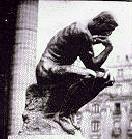Rev. 7/21/99.

INLS 214: USER EDUCATION -- Notes
Learning Styles
|
Evelyn
Daniel Rev. 7/21/99.
|
INLS 214: USER EDUCATION -- NotesLearning Styles
|
Learning styles are often grouped into cognitive styles, affective styles, and physiological styles and impact on learning in the following ways:Cognitive Styles
- Perceptual modality preferences -- preferred reliance on one of the sensory modalities for understanding experience. The typical modes are
Preference seems to evolve from kinesthetic in childhood to visual and eventually verbal in later years. In adults, all three modes function cooperatively with a usually discernible preference for one or the other.
- kinesthetic or psychomotor
- visual or spatial
- auditory or verbal
- Field independence vs. Field dependence - Analytic as opposed to non-analytic way of experiencing the environment. Independents perceive things as distinct from their background field, while dependents tend to be influenced by any embedding context.
- Constricted vs. flexible control - Individual differences in susceptibility to distraction and distortion in tasks with conflicting cues. The constricted style is more susceptible to distraction while the flexible style tends to concentrate on the task at hand.
- Tolerance for incongruous or unrealistic experiences -- Readiness to accept perceptions at variance with conventional experience. A high tolerance style reflect a willingness to accept experiences that vary markedly from the ordinary. Low tolerance implies a preference for conventional ideas.
- Conceptual tempo -- Individual differences in the speed and adequacy of hypothesis formation and information processing on a continuum of reflection vs. impulsivity. Impulsives tend to give the first answer they can think of even though it is often incorrect. Reflectives prefer to consider alternative solutions before deciding and to give more reasoned responses.
Affective Styles
- Curiosity -- differences in attraction to the novel or adventuresome aspects of the environment. Curiosity includes exploratory behavior, reactions to change or the need for change, and efforts to escape boredom.
- Locus of Control - Variations in individual perceptions of causality on a continuum of internality vs. externality. The internal person thinks of himself as responsible for his own behavior, as deserving praise for successes and blame for failures. The external person sees circumstances beyond his control, luck, or other people as responsible for his behavior.
Physiological Styles